Lough Neagh: Environmental group challenges sand ruling
- Published

Sand companies can extract 1.5m tonnes of sand from Lough Neagh every year but they do not have planning permission
An environmental group is appealing against a court decision over unregulated sand extraction from Lough Neagh.
In November, Friends of the Earth lost a case over how the issue was enforced.
It said the former Department of the Environment should have issued a stop notice which would have led to an immediate cessation.
But a judge ruled that the then DoE minister Mark H Durkan had not been "turning a blind eye".
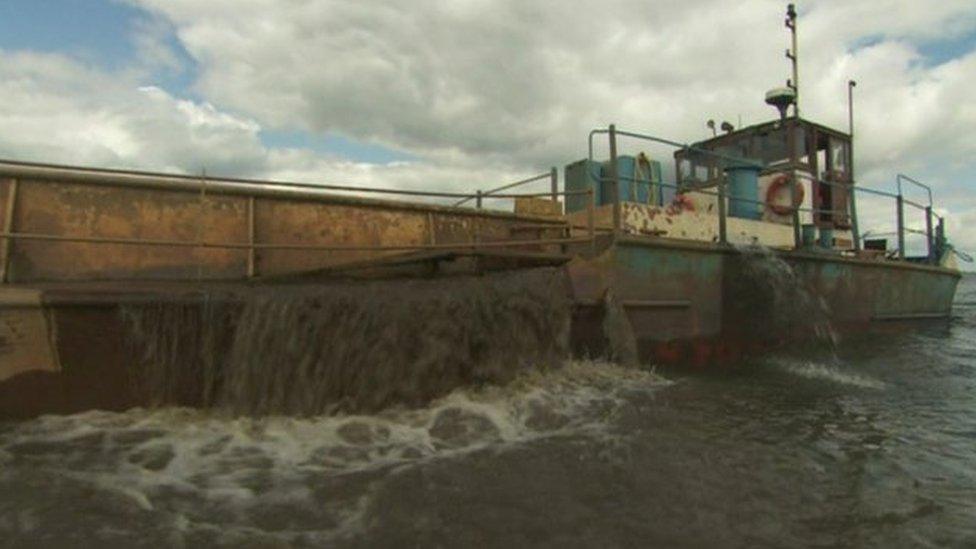
Sand is dredged onto barges from the bottom of Lough Neagh
Instead of a stop notice, Mr Durkan issued an enforcement notice. It is open to appeal.
One was lodged by the sand companies and dredging is continuing pending the outcome of that appeal.
About 1.5m tonnes of sand is sucked out of the bottom of the lough by barges every year. The extraction does not have planning permission.
The sand is used extensively in the construction industry.
However, Lough Neagh is an important bird sanctuary with EU protections.
Friends of the Earth said that placed a legal requirement on the department to protect it.
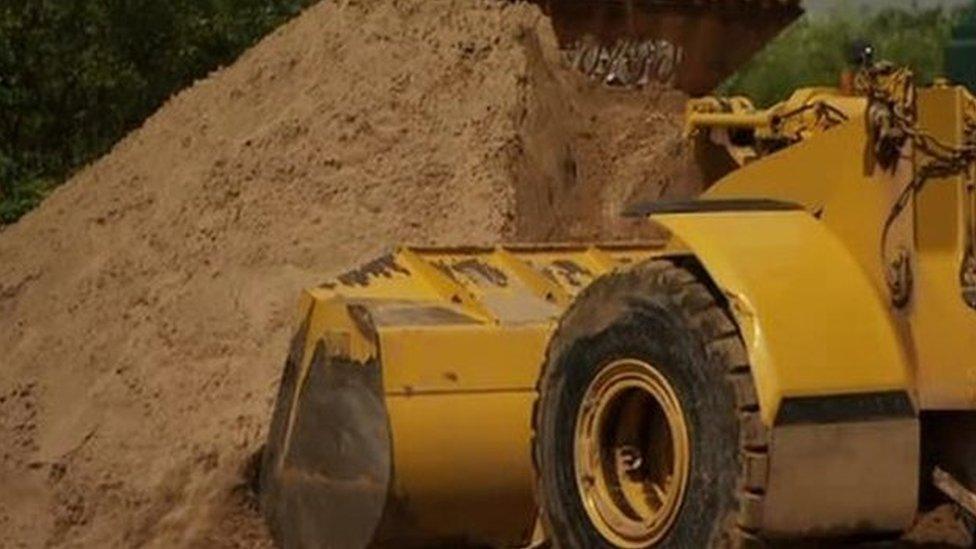
Much of the sand is used in the construction industry
Meanwhile, a report prepared as part of the legal battle said the impact of dredging on Lough Neagh and its birds was "negligible".
The survey was done by experts on behalf of the Environment Agency last summer.
It said "no significant negative impacts" were identified.
But it also said that the desktop survey had identified "important gaps" in knowledge about the impact of dredging.
About 150 jobs depend directly on the industry.
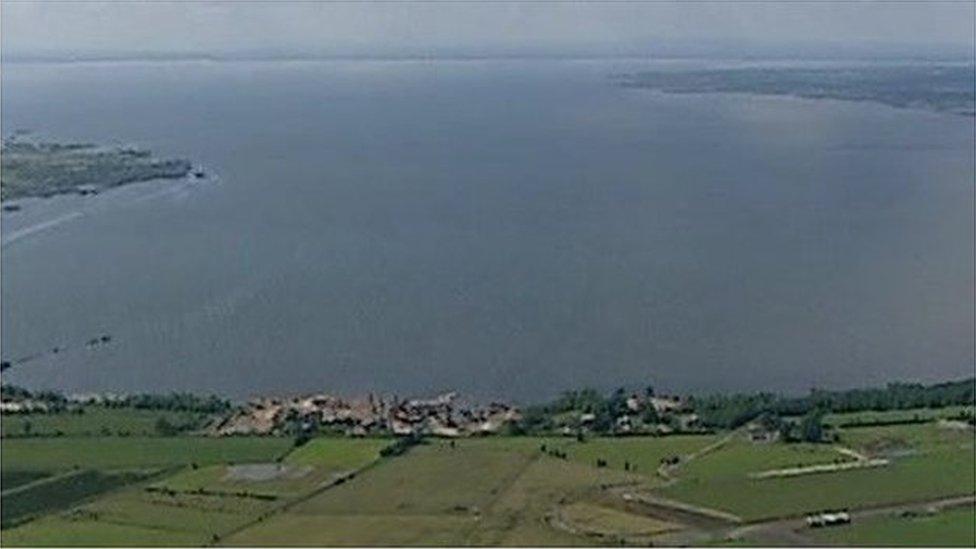
A report suggests the impact of dredging on the lough is "negligible".
The report, by a company called APEM, was released in response to a BBC Freedom of Information request.
It looked at the impact of dredging on the bed of the lough; on plant and invertebrate life and on birds.
The report said while there may be some impact at "the very local scale of the dredging activity in the context of the wider lough they are probably insignificant" in most circumstances.
The experts said dredging normally takes places place when barges are stationary, leaving a circular crater of about 15m in diameter.
They have calculated that it affects 70-80 hectares of the lough bed a year or about 2% per year of the targeted sand resource.
Modern extraction has been going on since the 1950s and stepped up in 2005 with the introduction of up-to-date barges.
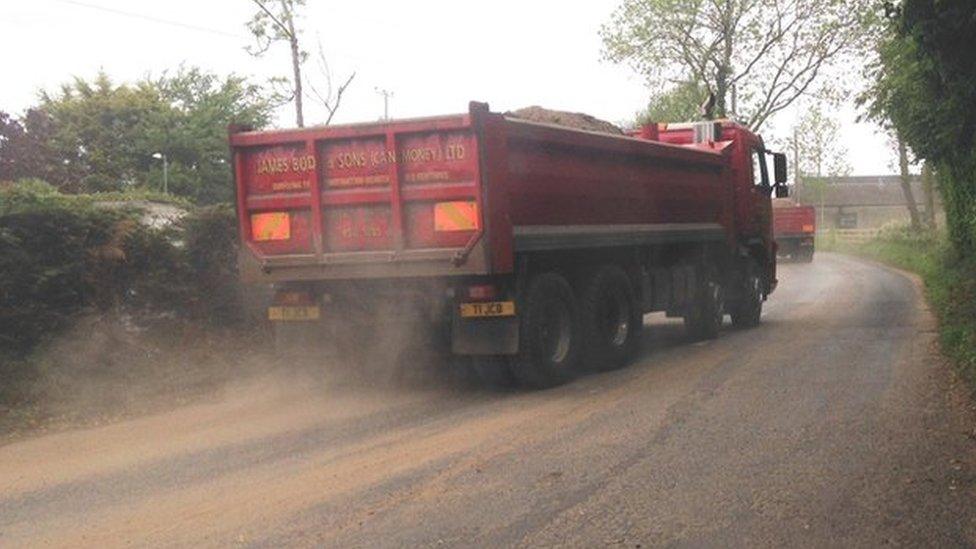
Sand being driven away from Lough Neagh
The experts said the sand plumes they generate in the lough during extraction are localised and the water returns to normal within 20 minutes.
They said the sand companies do not dredge in shallow water where plant life grows and sustains some birds.
And while another food source, invertebrates like molluscs and worm, may be affected, there are plenty of them in the wider lough.
The area where dredging is concentrated covers 50 sq km of the lough - the lough has a total area of 383 sq km.
The report says on the basis of available evidence, important species like some swans and ducks will not be significantly impacted by the dredging.
One of the few areas of concern for the authors was the proximity of dredging sites to pollan spawning grounds.
Pollan is a kind of fresh water herring. It is a leftover from the Ice Age when it was trapped in the lough by receding waters.
- Published25 November 2016
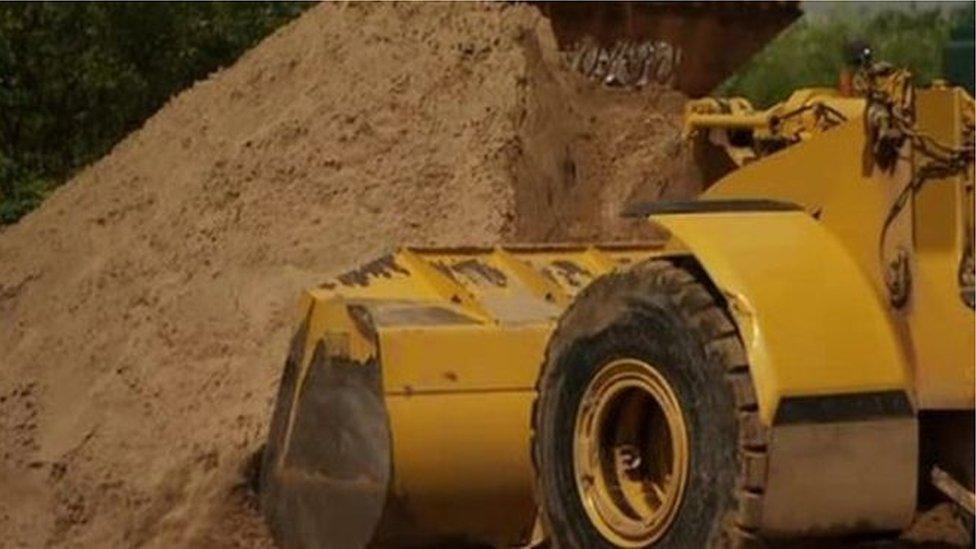
- Published29 June 2015

- Published28 May 2015
